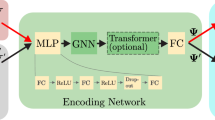Abstract
Television audience measurement is intended to collect information on the audiences watching a specific television program at a particular time. This information is crucial for television broadcasters and advertisers because they need to provide right television programs and commercials to right audiences to maximize their investments in broadcasting. For accurate measurements, a panel of representative audiences must be selected judiciously so that it accurately represents the entire target audience group. However, it is hard to secure a proper number of target audiences due to the expensive and cumbersome installations of measurement equipments. To resolve this issue in panel selection, we propose a novel television audience measurement framework using pervasive smart devices such as a smartphone. In the proposed framework, a short audio signal from a television set is recorded by a personal smart device and is sent to an audio matching server for the identification of the television program shown by the television set. For effective identification, we propose an accurate audio matching algorithm based on spectral coherence and efficient implementation techniques that exploit the inherent parallelism in the algorithm. To verify the plausibility of the framework and the effectiveness of the audio matching algorithm, we conduct experiments with diverse genres of television programs under various recording conditions.










Similar content being viewed by others
References
Allamanche E, Herre J, Hellmuch O, Bernhard B, Cremer M (2001) AudioID: towards content-based identification of audio material. In: Proceedings of 2001 AES international convention. Amsterdam, Netherland, pp 1–11
Blum T, Keislar D, Wheaton J, Wold E (1999) Method and article of manufacture for content-based analysis, storage, retrieval and segmentation of audio information. U.S. Patent 5,918,223
Butte AJ, Bao L, Reis BY, Watkins TW, Kohane IS (2001) Comparing the similarity of time-series gene expression using signal processing metrics. J Biomed Inform 34(6):396–405
Cano P (2002) A review of algorithms for audio fingerprinting. In: Proceedings of 2002 IEEE workshop on multimedia signal processing (MMSP). St. Thomas, USA, pp 169–173
Cano P, Batlle E, Mayer H, Neuschmied H (2002) Robust sound modeling for song detection in broadcast audio. In: Proceedings of 2002 AES international convention. Munich, Germany, pp 1–7
Cano P, Batlle E, Gomez E, Gomes L, Bonnet M (2005) Audio fingerprinting: concept and applications. In: Halgamuge SK, Wang L (eds) Computational intelligence for modelling and prediction, vol 2. Springer, Berlin Heidelberg, pp 233–245
Cockshott P, Renfrew K (2010) SIMD programming manual for Linux and Windows. Springer
Cohen EAK, Walden AT (2010) A statistical study of temporally smoothed wavelet coherence. IEEE Trans Signal Process 58(6):2964–2973
Cormen TH, Leiserson CE, Rivest RL, Stein C (2001) Introduction to algorithms. The MIT Press, pp 28–33
Culler DE, Singh JP, Gupta A (1999) Parallel computer architecture: a hardware/software approach. Morgan Kaufmann, pp 124–125
Deng J, Wan W, Swaminathan R, Yu X, Pan X (2011) An audio fingerprinting system based on spectral energy structure. In: Proceedings of 2011 IEEE international conference on communication technology. Jinan, China, pp 1103–1106
Fourie PJ (2010) Media Studies: media content and media audiences. Juta Academic, Lansdowne, pp 515–540
Fragoulis D, Rousopoulos G, Panagopoulos T, Alexiou C, Papaodysseus C (2001) On the automated recognition of seriously distorted musical recordings. IEEE Trans Signal Process 49(4):898–908
Haitsma J, Kalker T (2002) A highly robust audio fingerprinting system. In: Proceedings of 2002 international society for music information retrieval. Paris, France, pp 144–148
Herre A, Allamanche E, Hellmuth O (2001) Robust matching of audio signals using spectral flatness features. In: Proceedings of 2001 IEEE workshop on the applications of signal processing to audio and acoustics. New Platz, USA, pp 127–130
Jeong S, Lee S, Hahn M (2008) Dual microphone-based speech enhancement by spectral classification and Wiener filtering. Electron Lett 44(3):253–254
Kastner T, Allamanche E, Herre J, Hellmuth O, Cremer M, Grossmann H (2002) MPEG-7 scalable robust audio fingerprinting. In: Proceedings of 2002 AES international convention. Munich, Germany, pp 8–14
Kimura A, Kashino K, Kurozumi T, Murase H (2001) Very quick audio searching: introducing global pruning to the time-series active search. In: Proceedings of 2001 international conference on computational intelligence and multimedia applications. Salt Lake City, USA, pp 1429–1432
Kus R, Kaminski M, Blinowska KJ (2004) Determination of EEG activity propagation: pair-wise versus multichannel estimate. IEEE Trans Biomed Eng 51(9):1501–1510
Mytton G (1999) Handbook on radio and television audience research. Stationary Office Books
Nichols B, Buttlar D, Farrell JP (1996) PThreads Programming: a POSIX standard for better multiprocessing. O’Reilly Media
Rafailidis D, Nanopoulos A, Manolopoulos Y (2011) Nonlinear dimensionality reduction for efficient and effective audio similarity searching. Multimed Tools Appl 51:881–895
Rahmani M, Akbari A, Ayad B (2009) An iterative noise cros-PSD estimation for two-microphone speech enhancement. Appl Acoust 70(3):512–521
Sukittanon S, Atlas L (2002) Modulation frequency features for audio fingerprinting. In: Proceedings of 2002 international conference on acoustics, speech, and signal processing. Orland, USA, pp 1173–1176
Thomas WL (1992) Television audience research technology, today’s systems and tomorrow’s challenges. IEEE T Consum Electr 38(3):XXXIX–XXLII
Author information
Authors and Affiliations
Corresponding author
Additional information
This work was supported by NRF grant funded by the Korean Government (MEST) (NRF-2011-0009182) and also this research was supported by the MSIP (Ministry of Science, ICT and Future Planning), Korea, under the ITRC support program (NIPA-2013-H0301-13-4005) supervised by the NIPA.
Rights and permissions
About this article
Cite this article
Lim, C., Choi, JH., Nam, S.W. et al. A new television audience measurement framework using smart devices. Multimed Tools Appl 73, 1757–1776 (2014). https://doi.org/10.1007/s11042-013-1658-7
Published:
Issue Date:
DOI: https://doi.org/10.1007/s11042-013-1658-7




